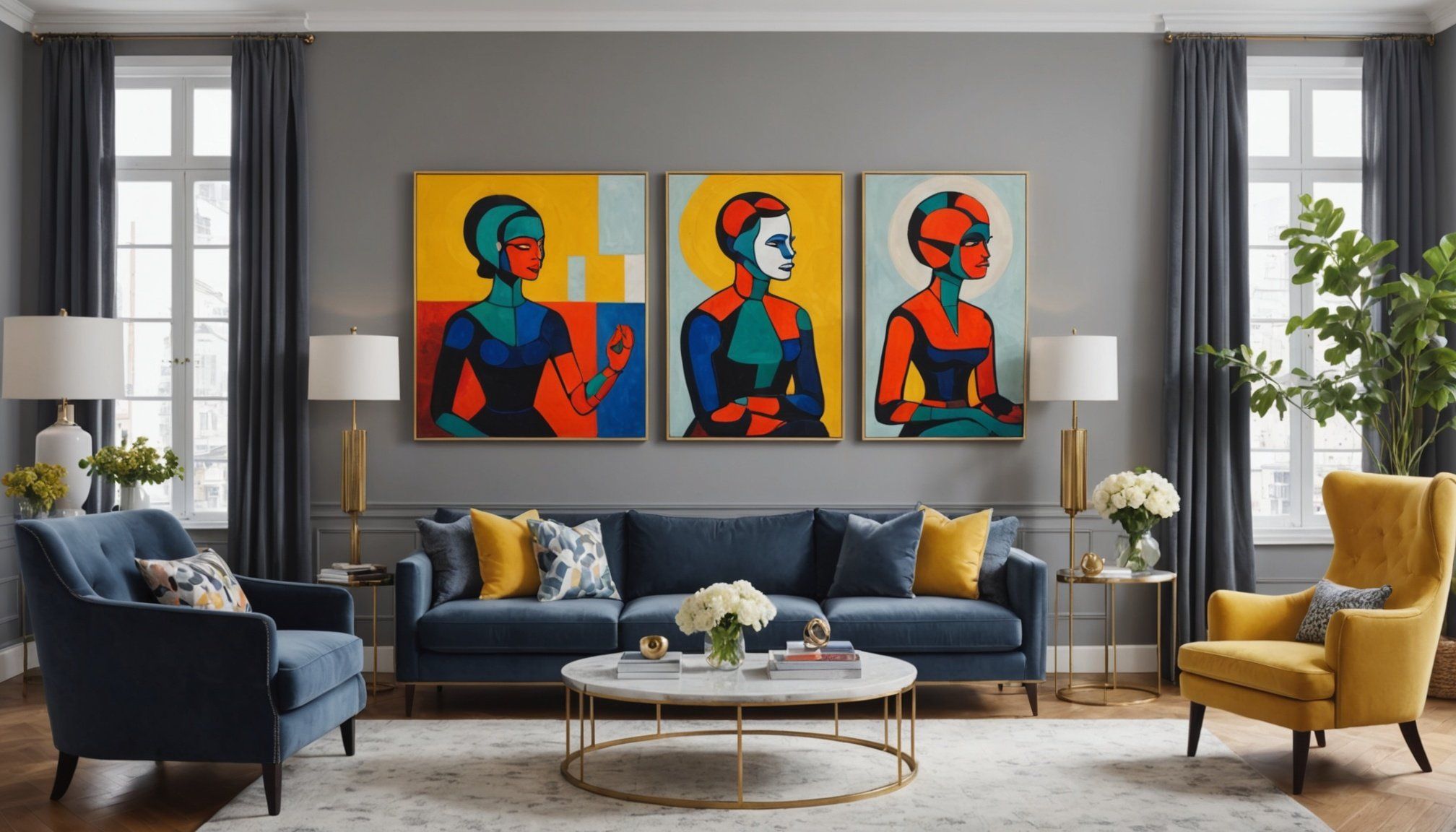Choosing the right art pieces for your space can elevate the overall ambiance of your home. Whether you are redesigning a single room or refreshing your entire living area, the artwork you select plays a crucial role in defining your interior’s style. This guide will walk you through the process of selecting pieces that not only resonate with your aesthetic but also enhance the functionality and feel of your environment. From considering colors to understanding the impact of different artworks, this article aims to provide you with the insights needed to make informed decisions.
Understanding Your Interior Design Style
Before diving into the art selection process, it is essential to identify your interior design style. Each style communicates a different mood and atmosphere. For instance, a minimalist space may benefit from abstract pieces that maintain a clean look, while a bohemian room might call for vibrant and eclectic artworks. Take time to observe your current decor. Look at the colors, shapes, and textures present in your space. Consider whether you lean towards modern, traditional, rustic, or industrial designs.
In the same genre : How can I use textiles to add warmth to my home decor?
Once you have a clear understanding of your interior design style, you can begin to think about how different art pieces can complement it. The key is to choose artworks that resonate with the existing features of your space. For example, if your living room has bold colors, you may want to choose a piece that either incorporates those hues or provides a contrast that still feels harmonious.
Furthermore, think about the space available for displaying art. Large canvases may overwhelm smaller rooms, while a series of smaller pieces can create a gallery wall effect that adds visual interest without cluttering the room. Understanding your style and space will guide you in making choices that enhance your home’s aesthetic.
In the same genre : What are some creative storage solutions for small UK apartments?
Choosing the Right Colors for Your Art
Colors play a vital role in the overall impression of any artwork. They can set the mood, evoke emotions, and unify a space. When selecting art pieces, look for colors that either complement or contrast with your existing decor. For example, if your room features neutral tones, introducing art with vibrant colors can create a stunning focal point. Conversely, if your interior is already colorful, consider selecting abstract art that uses subtle hues to maintain balance.
Consider the psychology of colors as well. Warm colors like reds and oranges can create a cozy environment, while cool colors such as blues and greens tend to have a calming effect. Think about how you want your space to feel. Will it be a calming retreat, or a vibrant gathering place? This decision should influence the artworks you choose.
Another strategy is to use art as a way to introduce new colors into your decor. If you want to experiment with a color palette that you’ve not yet incorporated into your room, selecting a piece that features those colors can be a great stepping stone. This way, your art becomes a vehicle for broader design choices in the future.
Creating a Cohesive Art Collection
When curating your art collection, it’s important to think about cohesion. A collection that feels disjointed can detract from the overall design of your space. Start by selecting a unifying theme or concept for your artworks. This could be based on a specific color palette, subject matter, or even a particular medium.
For instance, if you opt for a specific theme like nature, you might choose a mix of abstract landscapes, floral prints, and photographs of natural scenes. This variety keeps your collection dynamic while maintaining a cohesive feel. You can also consider the size and scale of the pieces. Large art can dominate a wall, while smaller artworks may work better in clusters or in unexpected locations, such as above furniture or in corners.
Think about how the art interacts with other elements in your room. The arrangement and placement of your pieces can also create a narrative that ties everything together. For example, a large piece above a sofa can serve as a conversation starter, while smaller artworks grouped together can tell a story or highlight a theme. By thoughtfully considering the relationships between your art pieces, you will enhance the overall atmosphere of your interior design.
Displaying Your Art Effectively
The way you display your art is just as important as the pieces you choose. Proper art placement can significantly influence how it is perceived within your space. Start by determining the best locations for your artworks. Generally, art should be hung at eye level for optimal viewing. Consider the height of the furniture and other decor elements in the room. If you’re hanging a piece above a sofa, it’s often recommended to leave about 6 to 10 inches of space between the top of the sofa and the bottom of the art.
Think about the lighting in your space as well. Natural light can highlight the colors and textures of your art, but too much direct sunlight can cause fading. If natural light is hard to control, consider using focused lighting such as spotlights or picture lights to enhance your art without risking damage. Additionally, don’t underestimate the power of mirrors in your display. Mirrors can reflect light and add depth to your room, making the art more dynamic.
Finally, don’t shy away from experimenting with unconventional display methods. Shelving, easels, or even leaning art against walls can create an inviting atmosphere. By approaching the display of your art with creativity and intention, you can make your pieces feel integrated into the space, further enhancing your interior design.
Choosing art pieces that complement your interior design style is a rewarding process that requires careful consideration and creativity. By understanding your design style, selecting appropriate colors, creating a cohesive collection, and displaying your art effectively, you can transform your space into a true reflection of your personality and taste. Remember, the art you choose should not just fill your walls but also resonate with you and enhance the overall feel of your home. With these strategies, you will be well on your way to curating an art collection that elevates your living experience.











